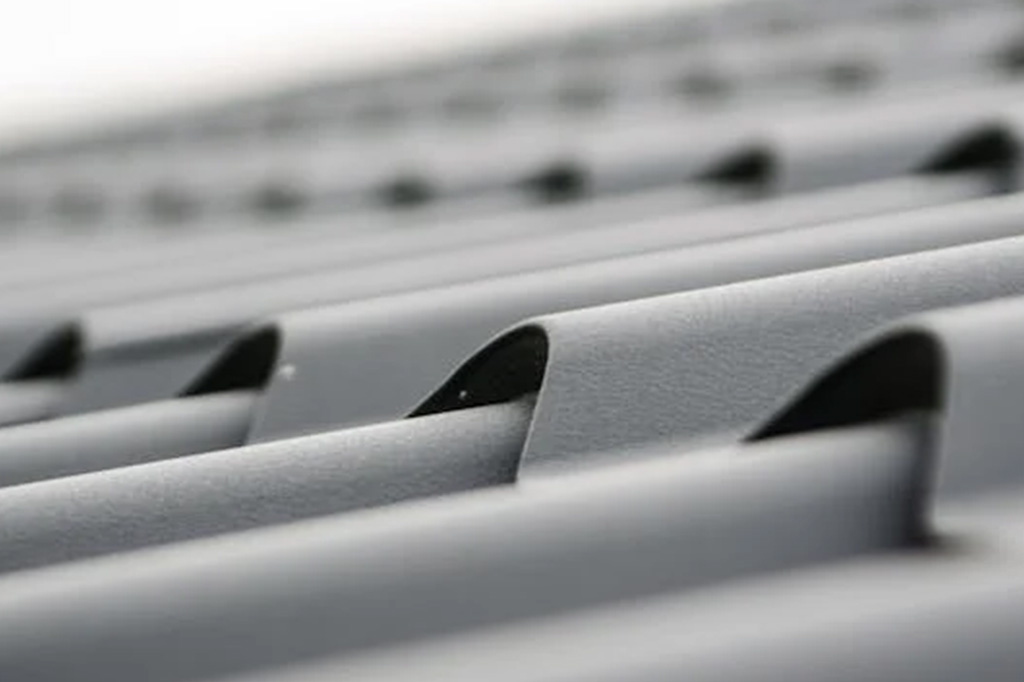Your roof is more than just that single layer of covering you see on top of your metal building. It is a mix of different roofing materials joined together to protect your structure.
The structure of a metal building is a complex interplay of components designed for strength, durability, and performance. One of the most critical elements in this system is the roof decking.
Often overlooked by those outside the construction industry, roof decking plays a vital role in the overall integrity of a metal structure. It provides a stable surface for roofing materials, contributes to load distribution, and even influences energy efficiency and interior comfort.
Understanding what roof decking is, how it functions, and the materials used for it can help you make informed decisions during the planning and construction phases. This component is not just a platform for roofing panels. It is a structural layer that determines how well a building performs under stress, weather, and time.
Defining Roof Decking in Metal Buildings
Roof decking in a metal building refers to the flat or slightly inclined surface installed over the building’s structural framework, onto which the final roofing material is applied. It acts as a foundation for roofing systems, offering the rigidity and support needed to anchor roofing panels, insulation, and other components. This layer is typically made from metal sheets, but it can also be constructed from plywood, concrete, or other composite materials in certain hybrid or specialized designs.
In a traditional wooden home, roof decking usually consists of plywood or oriented strand board. In contrast, a metal building uses galvanized steel or aluminum sheets, which align with the metal framing of the structure. These decking panels are attached to purlins, which are horizontal beams that span the width of the building. The decking provides a continuous surface and bridges the gaps between structural supports.
While its primary role is structural, roof decking also impacts the building’s resistance to environmental factors such as wind uplift, snow loads, and thermal expansion. It serves as a critical element in fire resistance, water shedding, and sound insulation. Without adequate decking, a metal building’s roof system would lack stability and fail to meet engineering or safety standards.
The Structural Role of Roof Decking
Roof decking must withstand the combined forces of live loads and dead loads. Live loads include elements like snow, rain, wind, and foot traffic from maintenance crews. Dead loads refer to the weight of the roofing materials, insulation, mechanical equipment, and the decking itself. Roof decking helps distribute these loads evenly across the building’s structural framework, preventing localized stress points and potential damage.
The rigidity provided by decking ensures that the roofing panels do not flex or sag over time. In regions with high winds, this stiffness becomes especially important. Roof decking serves as a diaphragm that resists lateral forces, stabilizing the building’s frame against twisting or collapse. Engineers often design decking patterns and gauge thicknesses based on local climate, building height, and intended use.
In industrial or commercial metal buildings, roof decking may also support rooftop units such as HVAC systems, skylights, or solar panels. Reinforced decking options are available for these applications, designed to handle heavier static loads without compromising structural integrity. During emergencies like storms or earthquakes, properly installed decking can make the difference between a structure that weathers the event and one that suffers significant damage.
Common Materials Used in Roof Decking
Steel is the most common material for roof decking in metal buildings. It offers strength, longevity, and resistance to fire and pests. Galvanized steel, in particular, is treated with a protective zinc coating to guard against corrosion. This treatment ensures a longer service life, even in humid or coastal environments.
Aluminum is another option, valued for its lightweight and rust-resistant properties. It is particularly useful in areas where weight limitations are a concern or where high humidity would accelerate corrosion in steel. However, aluminum is softer than steel and may require thicker gauges or more frequent support to achieve the same structural performance.
In some hybrid buildings, composite decking may be used. This type combines a metal base with concrete or insulation layers for added strength and energy efficiency. While more expensive, it provides excellent fire resistance and noise reduction, making it suitable for buildings like hospitals, data centers, or schools.
The thickness, or gauge, of the decking material significantly influences its load-bearing capacity. A thicker gauge can support more weight but adds to the overall cost. Selecting the right material and gauge depends on multiple factors including the building’s location, purpose, and budget.
Installation and Attachment Methods
The installation of roof decking must follow strict guidelines to ensure performance and safety. Sheets are laid in a pattern that creates maximum support with minimal waste. Panels are typically fastened to the metal purlins using self-drilling screws or welds, depending on the decking material and design specifications.
Proper alignment is essential. Misaligned decking can create uneven surfaces that compromise the performance of insulation and waterproofing layers. Fasteners must be installed at precise intervals to secure the panels against wind uplift and movement. Inconsistent spacing can lead to weak points where moisture can penetrate or panels can shift.
Seams between decking panels are usually overlapped or interlocked to form a watertight barrier. Some metal decks feature raised ribs or flanges that channel water away from joints. These design features help prevent leaks and improve the durability of the roofing system.
Depending on the type of roof system, additional layers may be applied over the decking. These can include vapor barriers, insulation boards, and underlayment membranes. Each of these layers adds to the performance of the roof, but they rely on the decking to provide a solid base for attachment and stability.
The Role of Roof Decking in Weather Resistance
A metal building’s roof is constantly exposed to harsh weather conditions. From heavy rains and snow to extreme heat and strong winds, the roof must resist a variety of challenges. Roof decking contributes significantly to this resistance.
Wind can exert both positive and negative pressure on a building’s roof. In strong storms or hurricanes, the uplift forces can be immense. Properly installed decking with the right fasteners helps hold the entire roofing system in place. The rigidity of the decking ensures that panels do not flutter or peel away during turbulent conditions.
Moisture resistance is another key consideration. While metal roofing panels provide a primary barrier, the decking acts as a secondary defense. Sealed joints, sloped designs, and water-shedding features built into the decking help prevent water from entering the interior of the building. This layered protection is essential in areas prone to heavy rainfall or snow.
Temperature changes can cause metal to expand and contract. Roof decking mitigates these movements by providing a stable base that reduces flexing. This helps prevent cracks in sealants or gaps in insulation, contributing to a more durable and energy-efficient roof.
Fire and Acoustic Performance
Metal buildings are often chosen for their fire resistance. Roof decking made from steel or aluminum contributes to this property. Unlike wood, metal decking does not ignite or support flame spread. In the event of a fire, it maintains its structural integrity longer, providing valuable time for occupants to evacuate and for emergency responders to arrive.
Some buildings require even greater fire protection. In these cases, fire-rated decking systems may be used. These systems combine non-combustible materials and insulation to achieve specific fire resistance ratings. This approach is common in warehouses, schools, and facilities that store flammable materials.
Acoustic performance is another consideration. Metal roofs can be noisy, especially during rain or hail. Decking systems that incorporate insulation or sound-deadening materials can reduce this noise. In environments where quiet is essential, such as classrooms or office buildings, enhanced decking systems contribute to occupant comfort and productivity.
Energy Efficiency and Insulation Support
Modern metal buildings aim to be as energy-efficient as possible. Roof decking plays a role in this objective by supporting insulation and reflective roofing systems. Decking provides a continuous surface for attaching insulation boards, which reduce heat transfer and maintain indoor comfort.
Some metal decking systems are designed with thermal breaks that interrupt the flow of heat through the roof. These breaks minimize energy loss and reduce the load on heating and cooling systems. When paired with reflective roofing materials, insulated decking systems can significantly lower energy consumption.
In cold climates, roof decking also supports snow retention systems. These additions prevent sudden snow slides and reduce ice dam formation. The structural strength of the decking ensures that added weight from snow and ice does not compromise the building’s integrity.
Maintenance and Lifespan Considerations
Roof decking in metal buildings requires minimal maintenance when properly installed. Regular inspections can identify issues such as loose fasteners, corrosion at seams, or accumulated debris. Addressing these concerns early helps extend the lifespan of the entire roofing system.
Corrosion is one of the most common threats, especially in coastal or industrial environments. Galvanized coatings, paint systems, and protective sealants help resist rust. If damage is discovered, repairs often involve replacing individual panels or re-securing fasteners rather than overhauling the entire system.
The expected lifespan of metal roof decking ranges from 30 to 50 years or more. Environmental conditions, installation quality, and the type of metal used all influence longevity. With proper care and timely repairs, roof decking can outlast many other components in a building.
Customization and Design Flexibility
Roof decking is not a one-size-fits-all solution. Builders and architects can choose from various profiles, gauges, and coatings to match the needs of a specific project. Profiles with higher ribs or flutes may be selected for greater strength, while flatter profiles can create a smoother interior appearance when left exposed.
Color and finish options also allow for aesthetic customization. In buildings where the decking will remain visible from the interior, finishes can be chosen to complement the design theme. Smooth or textured coatings, pre-painted surfaces, and protective films offer a balance between function and form.
Structural engineers may also design custom fastening systems or incorporate additional supports for heavy equipment or green roof systems. The ability to tailor decking to the requirements of each project makes it a highly adaptable and valuable component of metal building design.
Conclusion
Roof decking is more than just a flat surface beneath a metal roof. It is a critical structural element that supports weight, distributes loads, resists environmental forces, and contributes to fire safety and energy efficiency. From steel and aluminum to composite systems, the material and design of roof decking must be carefully selected to match the unique demands of each building.
A well-constructed roof decking system enhances the performance, comfort, and longevity of a metal building. It safeguards the structure from wind, water, fire, and temperature extremes while supporting insulation and additional roof features. As building standards evolve and expectations for sustainability and safety rise, roof decking will continue to play an essential role in the future of metal construction.

